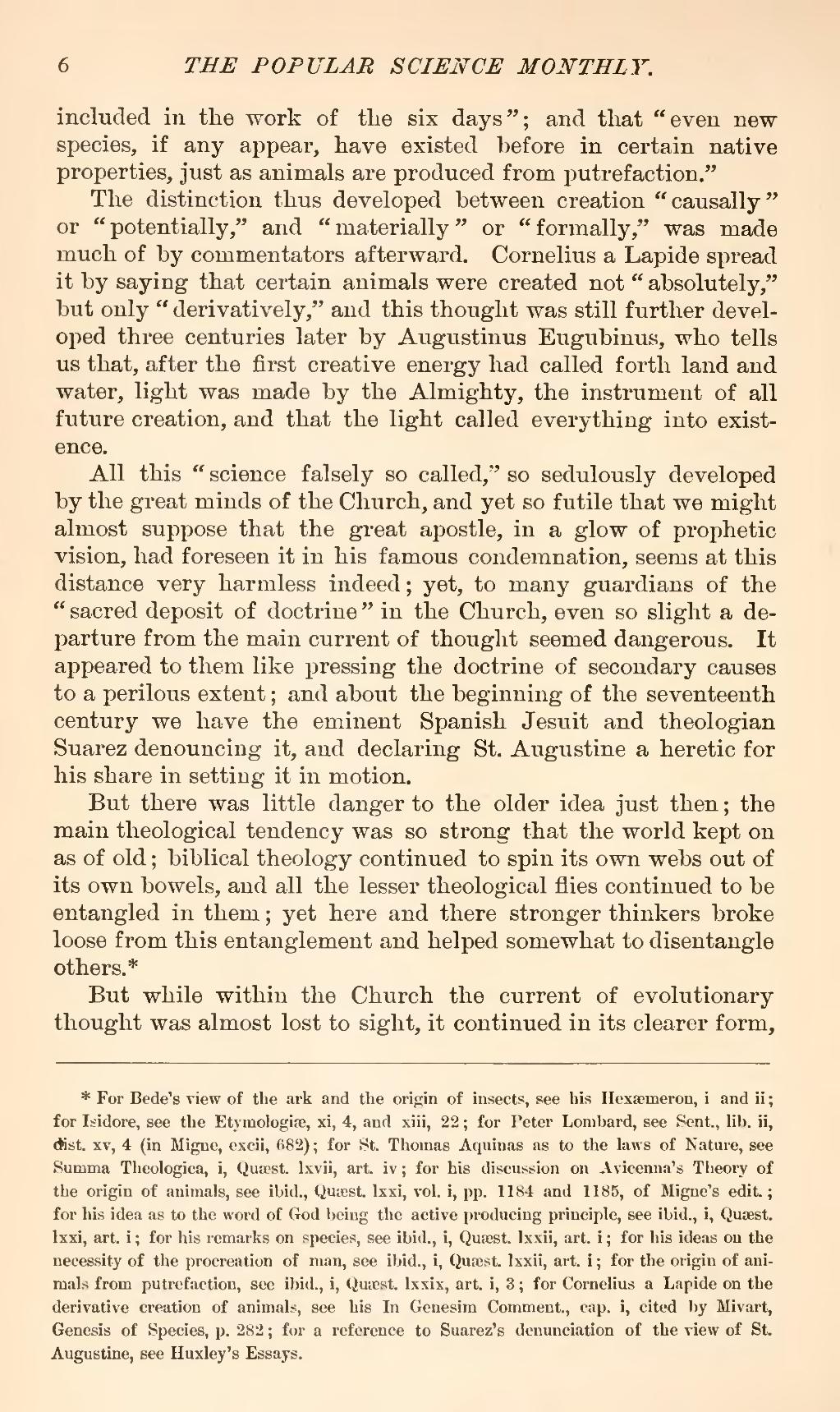included in the work of the six days"; and that "even new species, if any appear, have existed before in certain native properties, just as animals are produced from putrefaction."
The distinction thus developed between creation "causally" or "potentially," and "materially" or "formally," was made much of by commentators afterward. Cornelius a Lapide spread it by saying that certain animals were created not "absolutely," but only "derivatively," and this thought was still further developed three centuries later by Augustinus Eugubinus, who tells us that, after the first creative energy had called forth land and water, light was made by the Almighty, the instrument of all future creation, and that the light called everything into existence.
All this "science falsely so called," so sedulously developed by the great minds of the Church, and yet so futile that we might almost suppose that the great apostle, in a glow of prophetic vision, had foreseen it in his famous condemnation, seems at this distance very harmless indeed; yet, to many guardians of the "sacred deposit of doctrine" in the Church, even so slight a departure from the main current of thought seemed dangerous. It appeared to them like pressing the doctrine of secondary causes to a perilous extent; and about the beginning of the seventeenth century we have the eminent Spanish Jesuit and theologian Suarez denouncing it, and declaring St. Augustine a heretic for his share in setting it in motion.
But there was little danger to the older idea just then; the main theological tendency was so strong that the world kept on as of old; biblical theology continued to spin its own webs out of its own bowels, and all the lesser theological flies continued to be entangled in them; yet here and there stronger thinkers broke loose from this entanglement and helped somewhat to disentangle others.[1]
But while within the Church the current of evolutionary thought was almost lost to sight, it continued in its clearer form.
- ↑ For Bede's view of the ark and the origin of insects, see his Hexæmeron, i and ii; for Isidore, see the Etymologiœ, xi, 4, and xiii, 22; for Peter Lombard, see Sent., lib. ii, dist. XV, 4 (in Migne, cxcii, 682); for St. Thomas Aquinas as to the laws of Nature, see Summa Theologica, i, Quæst. Ixvii, art. iv; for his discussion on Avicenna's Theory of the origin of animals, see ibid., Quæst. lxxi, vol. i, pp. 1184 and 1185, of Migne's edit.; for his idea as to the word of God being the active producing principle, see ibid., i, Quæst. Ixxi, art. i; for his remarks on species, see ibid., i, Quæst. Ixxii, art. i; for his ideas on the necessity of the procreation of man, see ibid., i, Quæst. Ixxii, art. i; for the origin of animals from putrefaction, see ibid., i, Quæst. Ixxix, art. i, 3; for Cornelius a Lapide on the derivative creation of animals, see his In Genesim Comment., cap. i, cited by Mivart, Genesis of Species, p. 282; for a reference to Suarez's denunciation of the view of St. Augustine, see Huxley's Essays.
